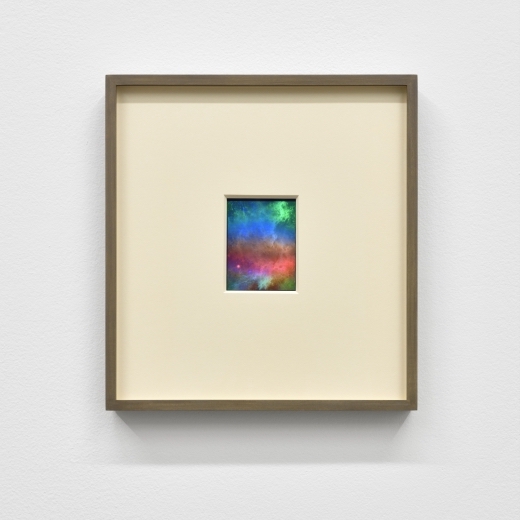NanoMedia is an emerging and novel type of information carrier that encodes information into
colours, and specifically, colours from nanoscale features. NanoMedia can be considered the
outcome of acute research in studying structural colours, a research field originating from the
study of nano-optics. A classic example from this field is the iridescent blue of morpho butterfly
wings, a result of the nanoscale features that interfere with light.
Although nano-structures are attractive for generating colours, the fabrication process of these
nanoscale features requires nanometer resolution, which makes it extremely slow. For example,
using regular nanoscale patterning equipment, a 1 inch x 1 inch photo will take almost one week
to complete. Many researchers and engineers had been striving to scale up the printable size into
photo- or poster- size, but no truly practical solution was available until early 2013, when I
joined the Ciber Lab as a postdoctoral researcher. Together with group leader Bozena
Kaminska, I developed the revolutionary concepts of “NanoMedia” to help address this
fabrication problem.
NanoMedia essentially utilizes an innovative—what we called “top-down” process—to boost the
patterning speed many times over. We pattern generic pixel bands in red, green and blue colours
made of nano-structures, and then selectively machine-down these pixels into a colour image.
The enormous gain on the pattering speed lays in that the entire process implements only fast
fabrication techniques and completely avoids slow nanofabrication equipment. From 2013 to the
present, NanoMedia concepts have been expanded into multiple industry-applicable techniques
and each technique is specifically targeted for certain application fields including artwork
printing, security printing, optical archival storage, decoration of solar panels, product
packaging, and reflective displays. Three patents on NanoMedia technology have been granted in
North America, and numerous high-impact journal papers, conference presentations and news
articles about NanoMedia have been published. [Ref. J1]
A NanoMedia image or device can appear in many different forms, from a translucent colour
image on a thin foil to a metalized mirror-like colour-shifting patterns on the surface of a plastic
bottle. From technological points of view, to apply NanoMedia technology in printing artworks
requires system-level design of the entire process, including the design of nano-structure pixels
and pixel bands, the patterning methods to machine-down the pixel bands, and the replications of
the produced colour images. Solving these issues require highly specialized technical knowledge
and tools, heavy work inside a cleanroom (a nanofabrication facility), and a tremendous amount
of experimental tests. Our team of engineering scientists at the Ciber Lab overcame all the
roadblocks with their ingenuity and diligent work.
It is an interesting adventure to see the merging of science and arts. The effective communication
and translation from the world of the artist to that of the engineering scientist can be very
profound and the synchronization of the activities from both ends by a media scholar added an
additional dimension to the project. The outcome from our work is explosive and boundless new
opportunities to further explore NanoMedia await.
– Hao Jiang, Ph.D.
Postdoctoral Research Fellow, School of Engineering Science,
Simon Fraser University,
Vancouver, BC, Canada










